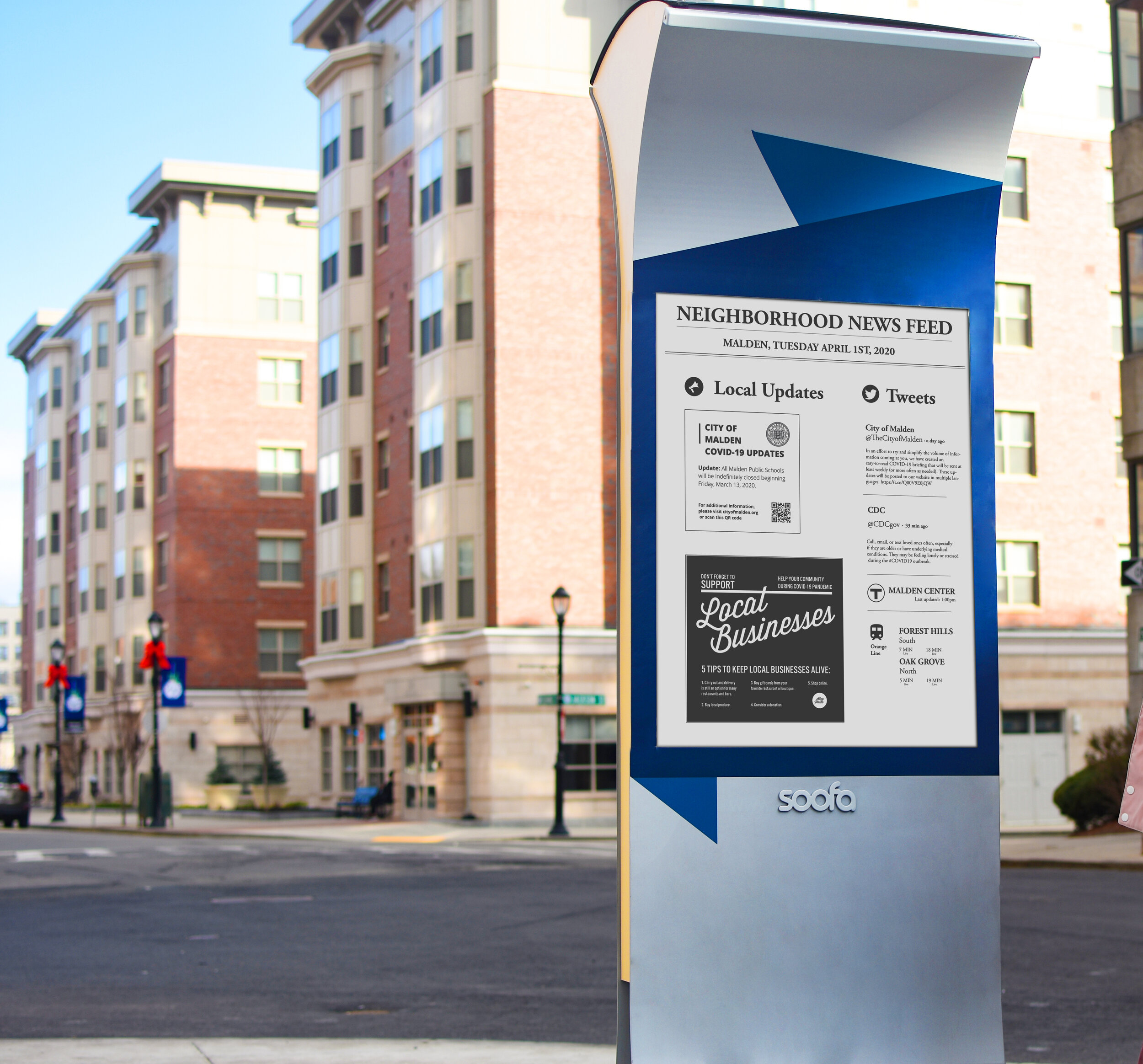Pedestrian activity is changing–Here's how to adjust your hyperlocal marketing.
Foot traffic is trending hyperlocal.
It’s no surprise that people's movements are changing. They're staying in a tighter radius to home–meaning that train stations and other formerly crowded commercial areas are no longer coveted media placements. Because of this unprecedented change, hyperlocal media will have the most impact for brands during this pivotal point in time.
Soofa Digital Signs for Effective Hyperlocal Marketing
Soofa Signs are placed primarily in residential neighborhoods, where other outdoor media is barred. Soofa’s mission is to bring the neighborhood news feed to a diverse set of locations, with a focus on residential mixed-use land.
The pedestrian sensors in Soofa Signs that measure real-time pedestrian traffic show that residential neighborhood hubs where businesses like pharmacies and grocery stores are located are attracting the most foot traffic, from residents getting some fresh air and exercise or shopping for essentials.
Foot traffic affected by COVID-19 in Soofa neighborhoods across the Boston DMA
In February, residential Soofa neighborhoods showed foot traffic peaks at 9:00am, 1:00pm, and 7:00pm on weekdays. Now in April, activity peaks between 12:00 - 7:00pm, illustrating that residents are no longer commuting and are condensing activity to afternoon exercise, lunch and dinner pickup, and shopping.
Google’s COVID-19 Community Mobility Report displays the changes in visitation between commercial and residential areas throughout counties. In Suffolk county (Boston), foot traffic in residential areas is up 20%, while visitation to transit stations is down 76%. Similarly, in Fulton county (Atlanta), foot traffic in residential areas is up 16%, while visitation to transit stations is down 49%.
While most brick-and-mortar locations are seeing decreases in foot traffic, others have increased. According to a visitation study conducted by media and ad tech agency billups, traffic to essential business continues to rise, with visitations to supermarkets up 16%, and general merchandise up 4%.
Players in the outdoor advertising space are seeing a shift in how media dollars are spent. Advertisers are strategically focusing their messaging en route to grocery stores and gas stations and in residential areas where people are still mobile.
Our recommendations to address this change:
Choose media placements that reach residential neighborhoods, or are close to the brick and mortar stores that people are still visiting
Choose a media provider that measures real-time impressions to ensure that your campaign is delivering to goal
Don’t be scared of lower foot traffic if you can target your audience right now. For example, if you have a product or service for grocery shoppers, now is the most highly targeted time to buy outdoor media
Make sure your brand’s message is uplifting and time-sensitive! Check out these examples of how Soofa advertisers have handled this change.




